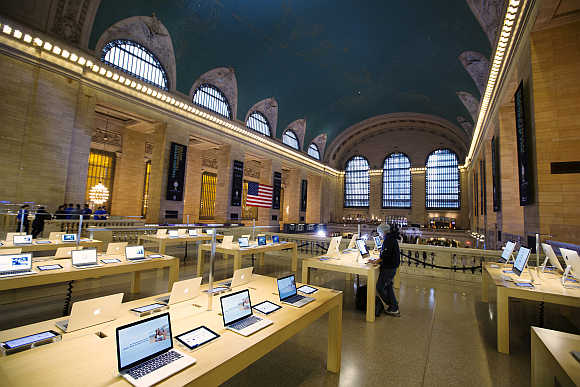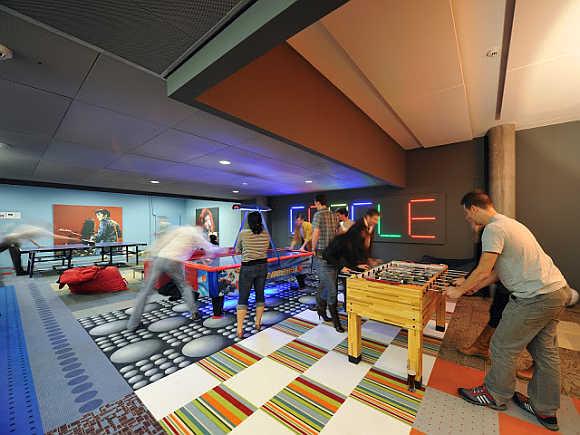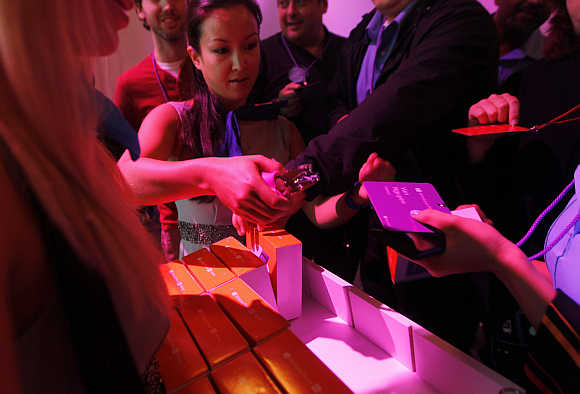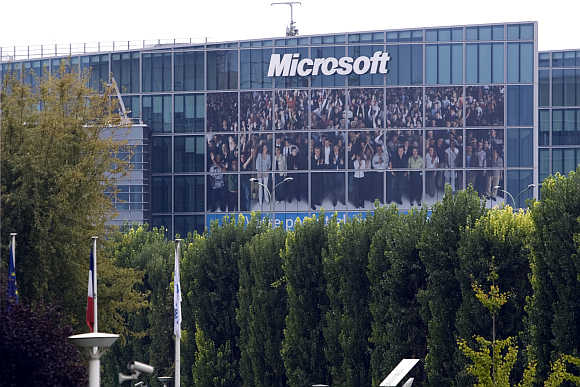 | « Back to article | Print this article |
Microsoft overhauls Windows 8 to attract users, app developers
Microsoft released a test version of its Windows 8.1 software, bringing back the "start" button and adding a host of features it hopes will appeal to users, while spurring developers into writing more applications for it.
The updated Windows, which was signalled at the end of May, is aimed chiefly at soothing traditional computer users, many of whom were unsettled by Microsoft's shift towards a new "tile"-based interface that works best on touch-enabled devices, but left fans of the old-style desktop confused.
Click NEXT to read more...
Microsoft overhauls Windows 8 to attract users, app developers
"Since we announced and shipped Windows 8, suffice it to say, we pushed boldly and yet what we found was we got a lot of feedback from users of those millions of desktop applications," said Microsoft Chief Executive Steve Ballmer, opening the company's annual developer conference in San Francisco.
"If I was to put it in coffee terms, 'Why don't you go and refine the blend here?' Let's remix the desktop and your modern application experience. Let's balance them better," said Ballmer, summing up user feedback.
Click NEXT to read more...
Microsoft overhauls Windows 8 to attract users, app developers
The result is the reinstatement of the 'start' button, and easier ways to find and access applications, along with a highly improved search function, some of which was announced last month.
Microsoft shares closed up 2 per cent at $34.35 on Nasdaq, outpacing generally higher markets. Ballmer also promised a "rapid release cycle" for Windows in future, abandoning its previous policy of making new versions of Windows every three years, in an effort to match Apple and Google.
The response from the thousands of developers at the conference in San Francisco was broadly positive, although attendees tend to be Windows die-hards.
Click NEXT to read more...
Microsoft overhauls Windows 8 to attract users, app developers
"Of course, they're playing some catch up (with Apple and Google). They have been lagging behind for years now," said Jorgen Nilsson, a manager at UK-based Aveva, a firm that makes computer-aided design software applications.
"But this release is driving it forward instead of catching up and making it work for business and personal use. This is looking really good now."
Part of Microsoft's problem has been persuading developers to create apps for Windows 8 and the little-used Windows Phone, given that almost all smartphone and tablet owners are using Apple's iOS or Google's Android system.
Click NEXT to read more...
Microsoft overhauls Windows 8 to attract users, app developers
Microsoft also said on Wednesday that Facebook had finally agreed to work on an app especially for Windows, which should be available this autumn. That is one factor that attract the more than one billion Facebook users to Windows-based tablets.
"I feel like Microsoft can actually seriously compete in the mobile ecosystem now," said Manav Mishra, director of engineering at the Barnes & Noble unit that makes apps for its Nook e-reader.
"Windows 8.1 finishes the journey Windows 8 started and I think it evens the playing field for Microsoft quite a bit, which wasn't the case before."
Click NEXT to read more...
Microsoft overhauls Windows 8 to attract users, app developers
But not all developers are convinced that Windows or Windows Phone are worth the trouble, given the massive built-in audience using iPhones, iPads and Android devices. "I haven't really considered it, No," said Sam Redfern of Psychic Software, maker of the 'Let's Break Stuff!' game, available on Android, iOS and even the BlackBerry PlayBook, when asked about developing for Windows.
"It never seemed like a particularly worthwhile undertaking, in terms of potential revenue."
Click NEXT to read more...
Microsoft overhauls Windows 8 to attract users, app developers
Markus Persson, developer at Mojang, whose 'Minecraft - Pocket Edition' is a top-seller on both iOS and Android, agreed, saying Microsoft's market was too "tiny. Both Symbian and Blackberry have more users than Windows Phone."
Neither man attended Microsoft's developer conference. Ballmer said that the Windows Store was approaching 100,000 apps. Meanwhile, Apple is nearing one million, with Android not far behind.

© Copyright 2024 Reuters Limited. All rights reserved. Republication or redistribution of Reuters content, including by framing or similar means, is expressly prohibited without the prior written consent of Reuters. Reuters shall not be liable for any errors or delays in the content, or for any actions taken in reliance thereon.






